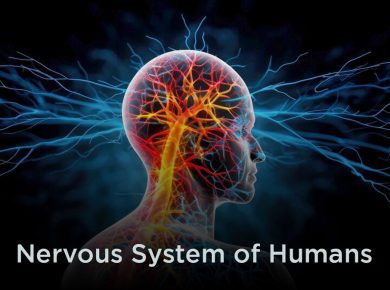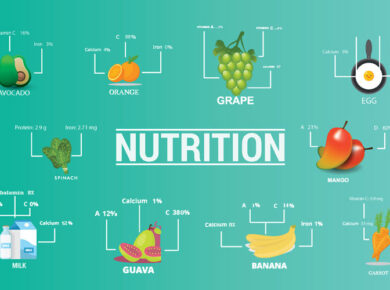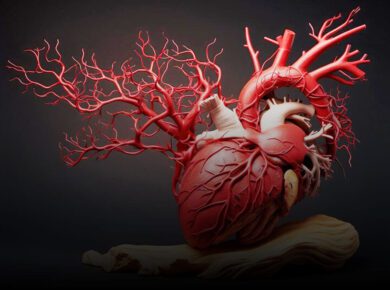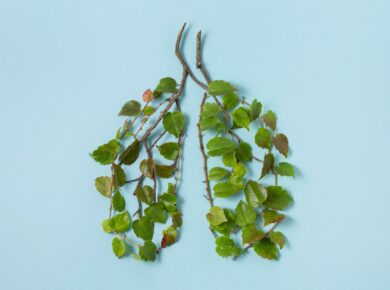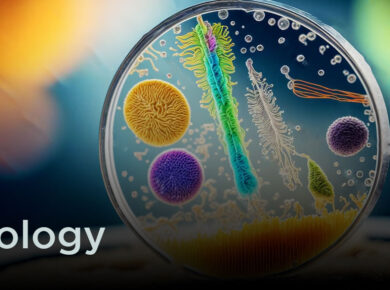Nutrients
There are six major classes of nutrients: Carbohydrates, Fats, Minerals, Protein, Vitamins and Water.
These nutrient classes can be categorized as either macronutrients (needed in relatively large amounts) or micronutrients (needed in smaller quantities). The macronutrients include carbohydrates (including fiber), fats, protein and water. The micronutrients are minerals and vitamins.
The macronutrients (excluding fiber and water) provide structural material (amino acids from which proteins are built and lipids from which cell membranes and some signaling molecules are built) and energy. Some of the structural material can be used to generate energy internally, and in either case it is measured in Joules or kilocalories (often called “Calories” and written with a capital ‘C’ to distinguish them from little ‘c” calories).
Carbohydrates and proteins provide 17 kJ approximately (4 kcal) of energy per gram, while fats provide 37 KJ (9 kcal) per gram though the net energy from either depends on such factors as absorption and digestive effort, which vary substantially from instance to instance. Vitamins, minerals, fiber and water do not provide energy, but are required for other reasons. A third class of dietary material fiber (i.e. non digestible material such as cellulose), is also required for both mechanical and biochemical reasons, although the exact reasons remain unclear.
Molecules of carbohydrates and fats consist of carbon, hydrogen and oxygen atoms. Carbohydrates range from simple monosaccharides (glucose, fructose, galactose) to complex polysaccharides (starch), Fats are triglycerides, made of assorted fatty acid monomers bound to glycerol backbone. Some fatty acids, but not all are essential in the diet, they cannot be synthesized in the body. Protein molecules contain nitrogen atoms in addition to carbon, oxygen and hydrogen.

The fundamental components of protein are nitrogen containing amino acids, some of which are essential in the sense that humans cannot make them internally. Some of the amino acids are convertible (with the expenditure of energy) to glucose and can be used for energy production just as ordinary glucose in a process known as gluconeogenesis. By breaking down existing protein, some glucose can be produced internally, the remaining amino acids are discarded, primarily as urea in urine. This occurs normally only during prolonged starvation.
Other micronutrients include antioxidants and phytochemicals, which are said to influence (or protect) some body systems. Their necessity is not as well established as in the case of for instance, vitamins.
Most foods contain a mix of some or all of the nutrient classes, together with other substances, such as toxins of various sorts. Some nutrients can be stored internally (e.g. the fat soluble vitamins), while others are required more or less continuously. Poor health can be caused by a lack of required nutrients or in extreme cases too much of a required nutrient. For example both salt and water (both absolutely required) will cause illness or even death in excessive amounts.
For more updates, visit www.iasmania.com. Please share your thoughts and comments.
If you’re passionate about building a successful blogging website, check out this helpful guide at Coding Tag – How to Start a Successful Blog. It offers practical steps and expert tips to kickstart your blogging journey!

